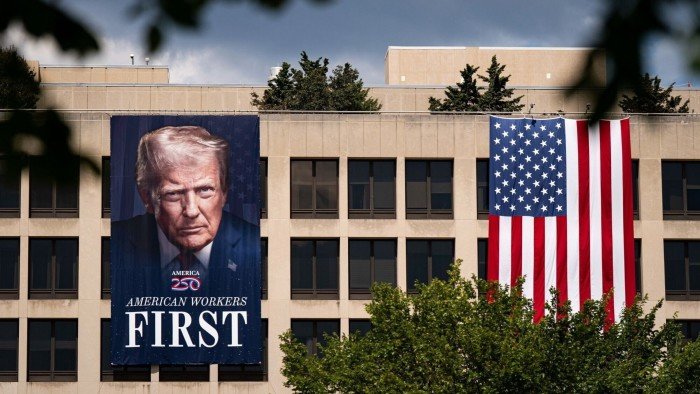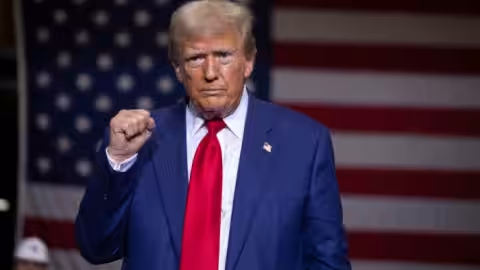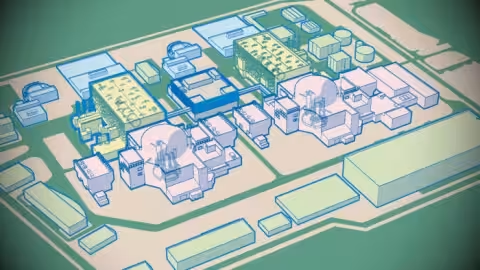Jamie Dimon is unequivocal about the impact of remote working on training new bankers. “It doesn’t work in our business,” the chief executive of JPMorgan Chase told Stanford’s Graduate School of Business this year. “Younger people [are] left behind.”
He has previously spoken of the importance of “the apprenticeship model . . . which is almost impossible to replicate in the Zoom world”.
In many workplaces, that apprenticeship model is as simple as sitting near a more experienced colleague or joining a client meeting to watch how it is done, while also learning the ropes by taking on often more repetitive and basic tasks.
But on-the-job learning is now facing the double threat of hybrid working, which means junior staff spend less time observing and listening to more senior colleagues, and generative AI, which is making obsolete many of the routine tasks that have long been building blocks of professional knowledge.
The effect has been noted across professional industries, from auditors and law firms to the big investment banks. Last year, the Public Company Accounting Oversight Board reported that the pandemic and remote and hybrid work had affected audit firms’ “apprenticeship model for on-the-job training, dissemination of culture, and professional scepticism”.
Others see the format as ripe for reform, anticipating that greater changes will come from generative AI.
Employers are investing heavily in AI to assist with working practices. Tools such as those rolled out by law firm A&O Shearman to deal with antitrust and contracts or Goldman Sachs to summarise complex documents and analyse data, are designed to enhance productivity. AI start-up Rogo aims to automate some of the laborious tasks done by junior investment bankers. However, some argue that by eliminating repetitive tasks, junior recruits will fail to develop muscle memory, which is essential for critical analysis, as well as the ability to identify mistakes in AI.
The changes may mean employers have to be more structured and deliberate in the training opportunities they offer junior staff, while working out how to get the best out of generative AI to free up time for their employees to do more valuable work.
Navid Mahmoodzadegan, the newly appointed chief executive of boutique investment bank Moelis & Co, says he hopes junior bankers will be rewarded with more “intellectually stimulating” work. Patrick Curtis, chief executive and founder of Wall Street Oasis, an online community catering to the financial services industry, predicts “this shifting more dramatically in the next 24 months as these [junior] roles start leveraging AI more, with some getting displaced outright”.
To maintain the apprenticeship model, leaders at some companies have followed Dimon in mandating five days of office attendance a week. Others, including Citigroup, are continuing with various hybrid working arrangements. Clare Francis, a partner at Pinsent Masons, a law firm that does not mandate days, says that while “junior lawyers benefit from office attendance,” some work, such as research, can be more effectively done at home. She adds that “everyone learns in different ways” and the reality is that many meetings are held on Teams so juniors “can see how they work” just as easily outside the office.
Yolanda Seals-Coffield, chief people and inclusion officer at PwC’s US division, believes hybrid working means “we have lost a little bit of that” tacit knowledge. She sees the solution in junior and senior staff being “far more intentional” about mentoring and debriefing. “We have to be [in] a world post-Covid where people are hybrid, you’re no longer sitting next to someone in an office or on a client side or at a meeting.” Staff, including trainees, at PwC US are required to be on-site half of the time. The arrangement means new recruits need to be clear about saying, “I want to actually shadow this particular behaviour”, she says. This might mean a junior associate sits in on a virtual client meeting or reviews a recorded walk-through of a technical process, followed by structured debriefs to reinforce the learning.
Rather than “a passive experience”, says Seals-Coffield, it requires bosses to think about modelling behaviour such as through guided questioning and peer feedback. AI could start to help with this by, for example, flagging to a team leader that a scheduled interview might provide a shadowing opportunity for a graduate employee who has indicated they are looking for this skill.
I’m optimistic that the tools will enable juniors to think about the material critically
New graduates might also be more fluent in AI than their supervisors, potentially opening up new responsibilities for them to take on. Patrick Grant, project director of legal tech and innovation at the University of Law, says they have developed courses to encourage students to use tools such as ChatGPT critically and ethically in assisting with research, organisation and editing, and to spot “errors or hallucinated references”. They encourage students, for example, to compare drafts of clauses with AI outputs to understand the tools’ lack of nuance.
Francis points out that junior lawyers using generative AI for research is not that different from past generations switching from books to the internet. “Today, the workflow of junior lawyers is not yet fundamentally different [from] how it was before AI was a tool at the disposal of legal teams. Lawyers at the outset of their training continue to learn by verifying results.” The role will “adapt and evolve” alongside AI.
Some argue that by eliminating repetitive tasks, juniors can progress more quickly by taking on more sophisticated and creative work earlier. Francisco Morales Barrón, a partner at Vinson & Elkins law firm in New York, is sceptical about the traditional model. “A lot of older generations will say you learn so much from reviewing thousands of contracts . . . somehow magically you learn through the process of repeating it hundreds of times. I’m optimistic that the tools will enable juniors to think about the material critically.” Francis agrees: “How much do you learn from a monotonous task?”
Seals-Coffield says employers need to get to grips with the desired outcomes of graduate training by separating the task from the skill: “If they’re not [going to] have the opportunity to do that task 50 times, they still need to be able to evaluate it, they still need to be able to provide the critical judgment and independent thinking that is important to evaluate the work that AI might be producing.”
This could include simulations in training, says Francis, “to develop, test and challenge the lawyer both on legal expertise as well as on soft skills such as communication and negotiation”.
Others suggest that any freed-up time will not be spent on more creative tasks, but on additional grunt work — or cutting the number of junior jobs.
According to Oxford Economics, a consultancy, “there are signs that entry-level positions are being displaced by artificial intelligence at higher rates”.
But in some organisations this could be a while off. “Analysts in my class are in a relatively favourable position in which we will have the aid of AI without it replacing us just yet,” reports one investment banking analyst.
Additional reporting by Anjli Raval and Sujeet Indap























